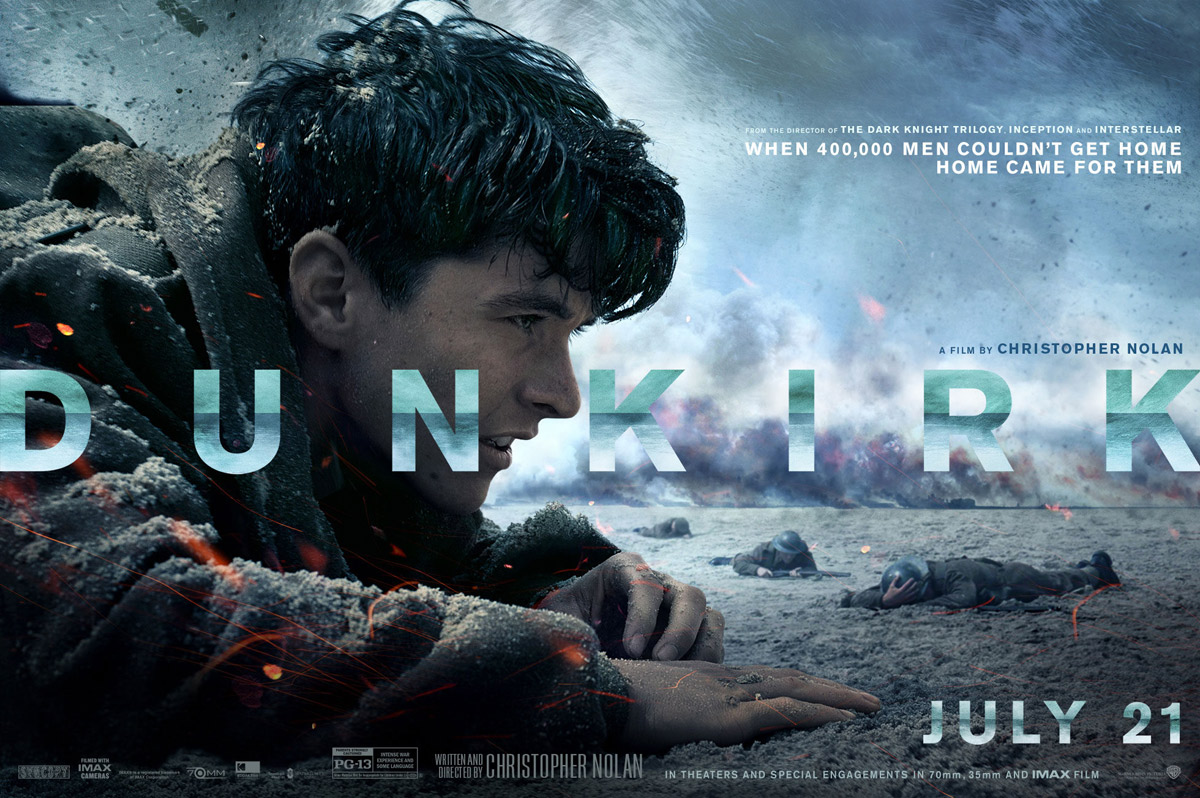Numbers obtained from IMDb and Rotten Tomatoes on July 29, 2017.
My rating IMDb Rotten Tomatoes
Critics Audience Critics Audience
9/10 94/100 8.6/10 93% 83%
A few weeks ago a friend asked for movie suggestions about war. What a difficult question! There are so many films about so many different wars… But the Second World War is still the main war depicted in movies. Every year there are several releases involving this war, each with a different focus.
Although abundant, few films about World War II focus exclusively on one episode. Christopher Nolan’s Dunkirk, therefore, is already different from the other due to its premise: to show the rescue of the British army in the beach of Dunkirk (France), after being cornered by the Germans. More than 300,000 men were on that beach waiting for reinforcements. It was then that British civilians crossed the English Channel in small private boats to aid in the evacuation.
It is not the first time that this rescue is portrayed in the movies. One of the most memorable scenes on this topic can be seen in Atonement. There is a 5-minute scene, single-take tracking shot, in which we can see the thousands of soldiers waiting for the rescue. It shows soldiers singing, others just sitting waiting, horses being killed, all accompanied by the beautiful and delicate score by Dario Marianelli.
Christopher Nolan, on the other hand, takes a completely different approach. Hans Zimmer’s choice for the score is, per se, enough to know that tension will be the prevailing theme of the story. Zimmer is famous for his strong compositions, which make the viewers feel as if they were actually inside the film, experiencing what goes on the screen.
Another element that differs Nolan from most current filmmakers: the timelines he uses to tell the story. Memento is a classic example of timeline reversal that makes the movie much more interesting. In Dunkirk, Nolan chooses to establish, right at the beginning, three separate timelines: 1) a week, referring to the waiting time of the soldiers on the beach, 2) one day, a the period that a civilian (Mark Rylance) took to go by boat from England to France to assist in the rescue, and 3) an hour, focusing on a fighter pilot.
We, therefore, have land, water and sea being shown, each with its particularities and timing. What does Christopher Nolan decide to do? He alternates the storylines as if they were happening at the same time! It may not sound very effective, but this overlap increases tension and anxiety, as the audience watches the conflicts almost simultaneously. And, as already mentioned, Hans Zimmer’s score, with clock ticking, increases the sense of urgency.
If this choice of editing is already different, another point that differs this film from the others of the genre is the absence of various elements, such as personal stories of the characters, discussions about combat strategies, as well as actual fighting: the Germans do not appear in the film. Nor are there any long scenes of soldiers being shot. There is much noise from explosions, but almost none of them appear on the screen.
Dialogues are also scarce during the film. It is clear that Christopher Nolan was much more concerned in transmitting sensations through visual and sound effects than by any kind of conversation between the main characters.
In addition to Mark Rylance, Fionn Whitehead, Tom Hardy, Kenneth Branagh, Cillian Murphy and singer Harry Styles are also in the cast.
Dunkirk is a film that probably will not please everyone, but that certainly makes Christopher Nolan remain as one of the best directors of our time. Definitely worth seeing!




